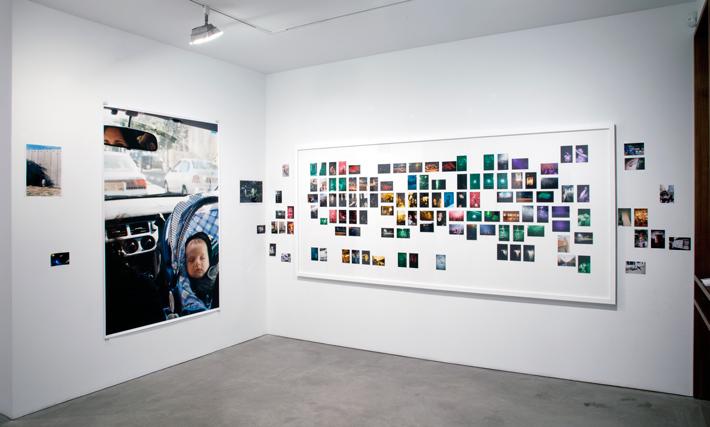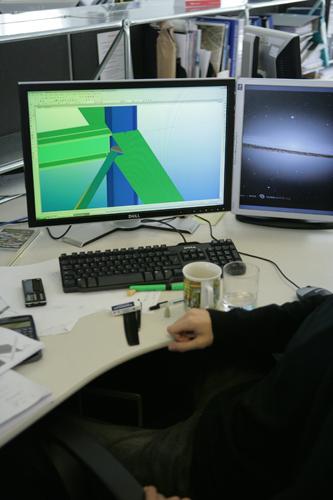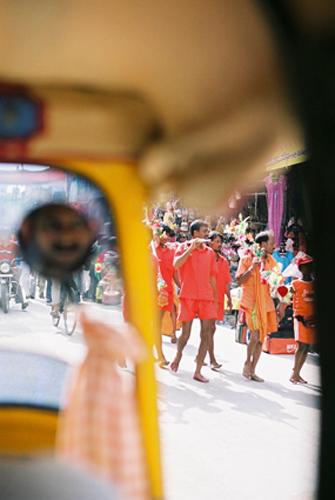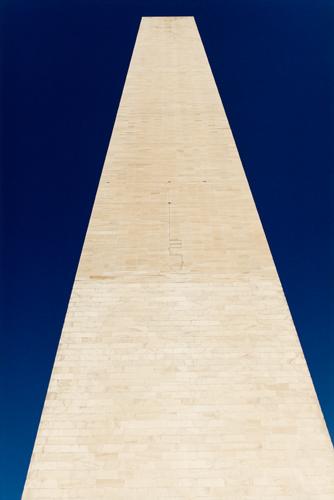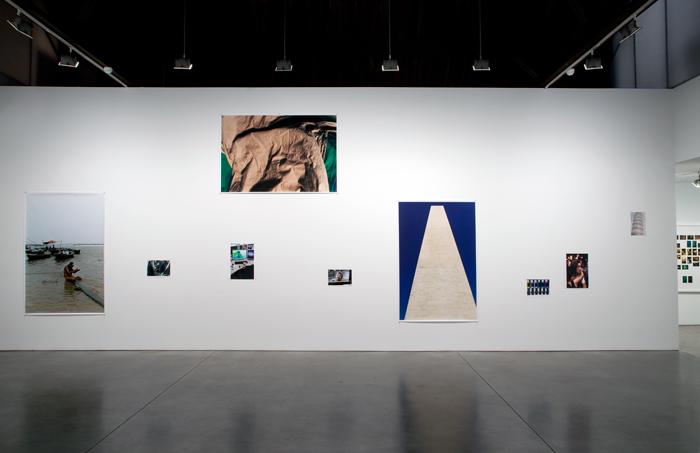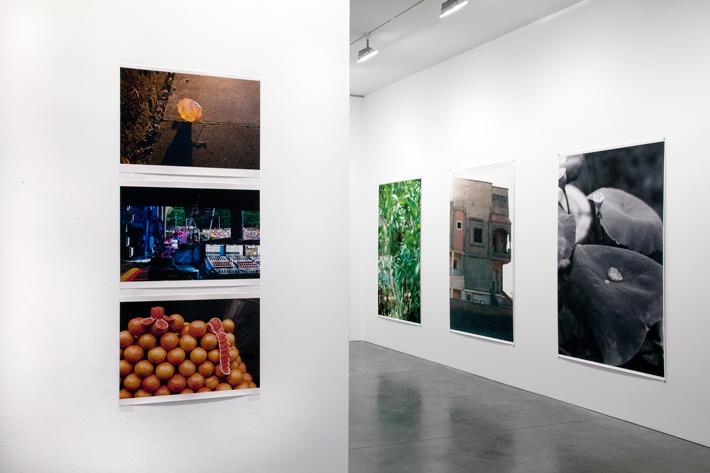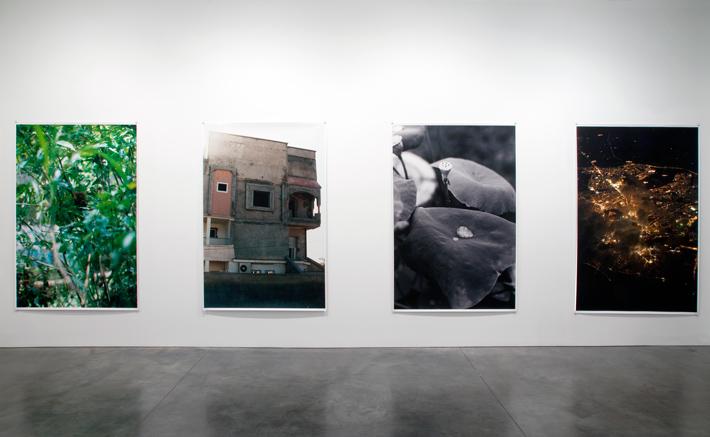Wolfgang Tillmans
January 30 – March 13, 2010
Main Gallery
PICTURES IN THE PLACE OF OTHERS
things thought while looking at
Wolfgang Tillmans's new work
- Dominic Eichler
In a wind blown Norwegian museum, a specialist in photography conservation working on 19th Century prints recording a solar eclipse turns to a group of journalists, many clutching impressive digital cameras. Rueful, he reminds the company that if a pile of prints and a stack of hard-drives packed with image data were left side-by-side in a room, and then the electricity went out and many years were to pass, that it is highly probable that only some of the paper prints would survive and none of the data. Feet shuffle awkwardly as that apocalyptic information sinks in, especially because we still mix up pictures with memories. It seems ironic that even though we know this, or ought to, that we don't make prints and trust our disorganized data like ourselves. The vanitas theme expressed through loose, day-lit fruit or the fragile expressions of a small group of close friends and muses, has been a constant trope of Wolfgang Tillmans's photographic work over the last two decades. In this period arguably our relationship to the photographic image has changed forever, while Tillmans's work has shown remarkable constancy and led the way for many.
During eyes-open, waking hours, evidently a large slab of our brains is busy processing images whether we want it to or not. Perhaps for that internally exhausting reason most people secretly think that they are on top of the picture game, that not only do they know a good picture when they see one but if they had the time, they could also make one if they wanted to. It doesn't seem to matter that evidence to the contrary is everywhere. Actually we remain ignorant, gullible and easily manipulated when it comes to pictures and weirdly 'less and less impressed by impressive pictures', as Tillmans observed to me. For his part though, he wants it to be possible to trust his pictures, which perhaps seems like a tall order getting taller, but that's still what he hopes or works at making possible.
The digitization of the image world has cemented this egoistic fantasy of picture mastery and added another dimension because in the uploaded world, next to scraps of text, pictures are the essence of virtual existence. Given the drama of this situation, the limitless production and distribution of an arsenal of personal pictures has come to be considered a right, something which makes pictures as ubiquitous but also as necessary as air. Generally, we are just as blasé about pictures as air and in truth don't really bother with looking and even when we do, we do it without much attention to detail or understanding of really what makes what we are looking at tick. Art suggests that when we do that we deny ourselves both knowledge and pleasure. Tillmans's pictures have never denied either the highly subjective or personal on one hand or the enrichment of the experience of looking through art on the other. His unapologetic attachment to colour and colour combinations is one example of this. Bring on those sapphire blues and golden yellows, those overly demanding greens, says his work - maybe it doesn't even matter on who or what they are found.
This text accompanies a new solo exhibition of his work, which at the time of writing, has no title. The confronting, intense constellation of pictures Tillmans has chosen for this exhibition have - in a classic sense of how artists used to work and galleries used to schedule - been drawn from his new work of the last year or so. Actually, Tillmans is constantly taking pictures in one way or another, although he says he is still never sure if he can do it. I joke that the closed shutter is the photographer's equivalent of the writer's blank screen.
What has Tillmans seen and captured for us? In this exhibition he has left to one side for the moment works of the last years entailing abstract examinations of photographic materiality and process. Instead he has chosen to self-consciously revisit the aesthetic innovations and pictorial methods for which he became renowned. For example: the pictures all come in three standard sizes; nothing is framed, just scotch-taped or hung on binder clips like banners on the wall; one picture is repeated somewhere to keep you awake and wink at photography's anti-art reproducibility; and, the hanging gravitates around a horizon and a virtual grid in which images don't fill all of the gaps but a sense of balance and rationality is conveyed from the placement.
At the same time, he told me he wanted to aesthetically: "move the goal posts a little." Aside from changes in subject matter there is a 'newness' in these pictures, which involves working with the benefit of hindsight in order to allow steps forward. There is self-quotation with twists and developments. A few images of clothes and fabric are case in point - his new 'faltenwürfe' (crease or fold) pictures point in two directions, one which evokes the absent bodies and the other which suggests they would be happy to dissolve onto another plane, perhaps one of pure abstraction. Up to this point I have intentionally avoided his new subjects because lazy-looking involves reducing pictures to labels. Here is a problematic list of some: the leaning tower of Pisa, grey relentless guest worker's housing in Dubai seen from a plane, the security barrier in Jerusalem, a rack full of tabloid magazines, a pile of eggs in cartons, the folds of a rain-proof jacket, South East Asian small businesses, a man cleansing in the river Ganges, and a computer room in a research station monitoring climate change. But there are many, many more, each one particular and stand-alone.
For some days before typing this now I was wondering how to avoid writing this sentence: Wolfgang Tillmans's new exhibition addresses life on the planet now. He would never claim that and somehow that version sounds awful like it should be read by a voiceover baritone, but at least it gets around the now empty sounding 'global' view. Let's keep it simple - Tillmans has made and collected a bunch of fine pictures from all over the place. He told me he liked the possibilities and the problems of a certain amount of randomness in subject matter and selection. He wrote to me:
In a way to reconcile or address the randomness of the world today is the biggest task, to let it all in, but still hold course. Colour help me! It's a pure seeing I'm interested in the mind being stretched by trying to pull this world of pictures together, like a bit of a screw-up. Eat this! Previous shows also often included absurd moments and odd subject matter that had nothing to do with the core narrative of the 'real' utopias portrayed in my pictures. But this show reverses the balance - a few pictures from 'my world' are met with a majority of 'outside' world.
Thus these pictures are worldly but it is not a glamorous world. When they show economy, power, capital - whether monstrously built, in violent action or advertising its things - it is from a distance or with dry sarcasm or with a firmly held mirror. When they show people - sexy out-of-it friends or strangers in crowds regardless of their milieu - they create intimacy, win your sympathy or represent freedom. When they show things and surfaces and light hinting things and surfaces they celebrate really, really looking and looking again and the ancillary art of composition whether we are thinking of fruit or a bunch of lines.
Not shying from either the socio-political difficult or the fatigued iconography of everyday subjects Tillmans makes striking picture-making look easy. He allows recognition, identification, familiarity and discovery. He likes his pictures to be affective, to be good, embedded in them is belief.
Hamburger Bahnhof's extensive retrospective of Wolfgang Tillmans's work, shown in Berlin in 2008, was accompanied by an exhibition catalogue, "Lighter," of the same name, comprising installation views by Tillmans and others of his exhibitions and installations over the course of the last 20 years. Later that year he curated an exhibition of his own work with pieces from the collection at the Stedelijk Museum, Amsterdam, Netherlands. Tillmans was included in Life on Mars: Carnegie International 2008 at the Carnegie Museum of Art, Pittsburgh and in the 53rd Venice Biennale in 2009. Born in Remscheid, Germany, in 1968, Wolfgang Tillmans has lived and worked in London since 1990 as well as since 2004 in Berlin.
For more information and images please contact Renee Reyes at r.reyes@rosengallery.com
